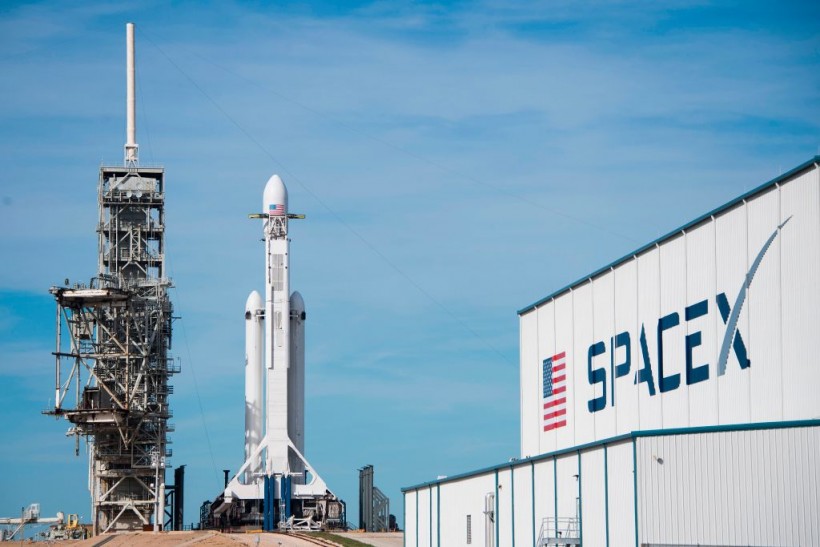In a strategic move, SpaceX, renowned for its vertical integration approach, recently shifted gears by acquiring parachute vendor Pioneer Aerospace. This acquisition was prompted by the bankruptcy of Pioneer Aerospace's parent company.

(Photo : JIM WATSON/AFP via Getty Images)
TOPSHOT - The SpaceX Falcon Heavy rests on Pad 39A at the Kennedy Space Center in Florida, on February 5, 2018, ahead of its demonstration mission.
Acquiring Pioneer Aerospace
Recognized for its vertical integration strategy, SpaceX recently broke its trend of outsourcing parachutes by quietly acquiring parachute vendor Pioneer Aerospace. Priced at a modest $2.2 million, TechCrunch reported that the acquisition followed the bankruptcy of Pioneer Aerospace's parent company.
Pioneer Aerospace specializes in providing drogue parachutes for SpaceX's Dragon capsules, crucial components for NASA's cargo and astronaut transportation to and from the International Space Station. These sophisticated parachutes deploy at high velocity, stabilizing the Dragon capsule and reducing its speed during reentry.
NASA notes that the drogue chutes activate at 18,000 feet in altitude when the Dragon is moving at approximately 350 miles per hour. The main chutes, purchased from Airborne Systems, deploy later during reentry at around 6,000 feet in altitude.
Rescuing a vendor from potential dissolution, a fate looming due to its parent company's bankruptcy, reflects a significant initiative on SpaceX's part. However, this underscores the formidable challenges associated with crafting parachutes capable of withstanding extreme speeds.
Also Read: Meet Kairan Quazi: The 14-Year-Old Engineer Hired by Elon Musk's SpaceX
Abhi Tripathi, Director of Mission Operations at UC Berkeley's Space Sciences Laboratory, emphasized the complexity of space parachutes in a recent interview. Creating these parachutes is among the most challenging tasks, comparable to developing a highly intricate propulsion system.
Tripathi's extensive career, including a decade at SpaceX as Director of Dragon missions and Director of Flight Reliability for the Dragon capsule, along with nearly ten years at NASA as a lead aerospace systems engineer, provides unique insights into the intricacies of space parachute engineering.
Outsourcing Supplies
While SpaceX is renowned for its in-house production of components, Tripathi revealed insights into the occasions when CEO Elon Musk decides to outsource. The criteria Elon Musk evaluates involve ensuring the competency of the supplier and their ability to meet delivery schedules.
The Information reported that Tripathi explained that when one or both of these criteria are not met, SpaceX examines the possibility of bringing the production in-house and integrating the component into its product line.
The intricate nature of manufacturing small-volume, technically advanced products poses challenges for rapid replication, especially within the tight timeframes required for the certification of SpaceX's Dragon.
While SpaceX actively participated in engineering the drogue chutes and conducted extensive in-house testing, the manufacturing aspect led the company to collaborate externally. This collaboration materialized in agreements with Pioneer and Airborne.
Tripathi highlighted that the creation of parachutes is more art than science, emphasizing the importance of thorough testing and a dedicated test program to understand every aspect of the parachute system. Without such a meticulous approach, gaining comprehensive knowledge of the system's weaknesses becomes a challenging task.
Related Article: SpaceX Marks 42nd Launch of the Year for Starlink Satellites










